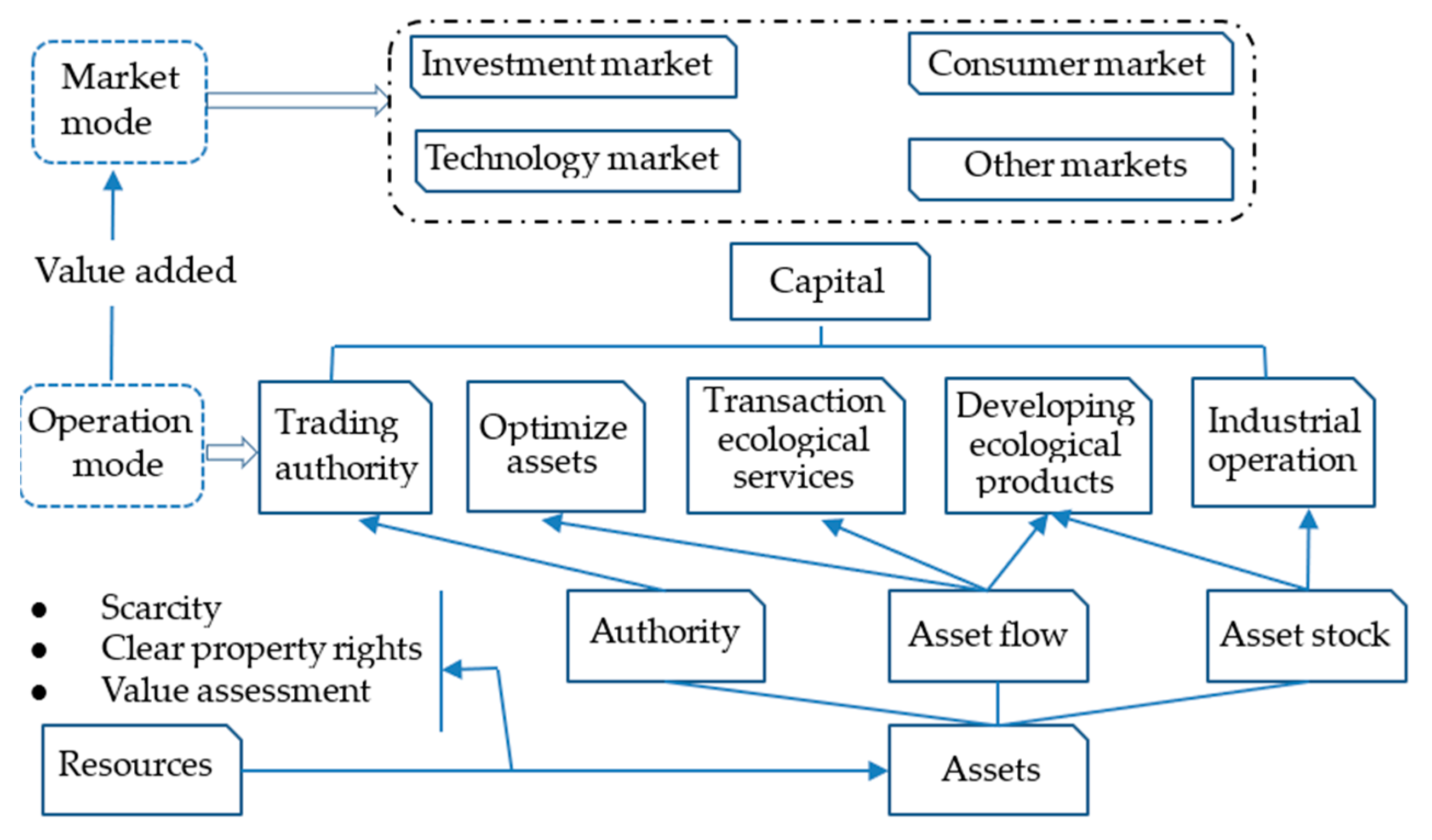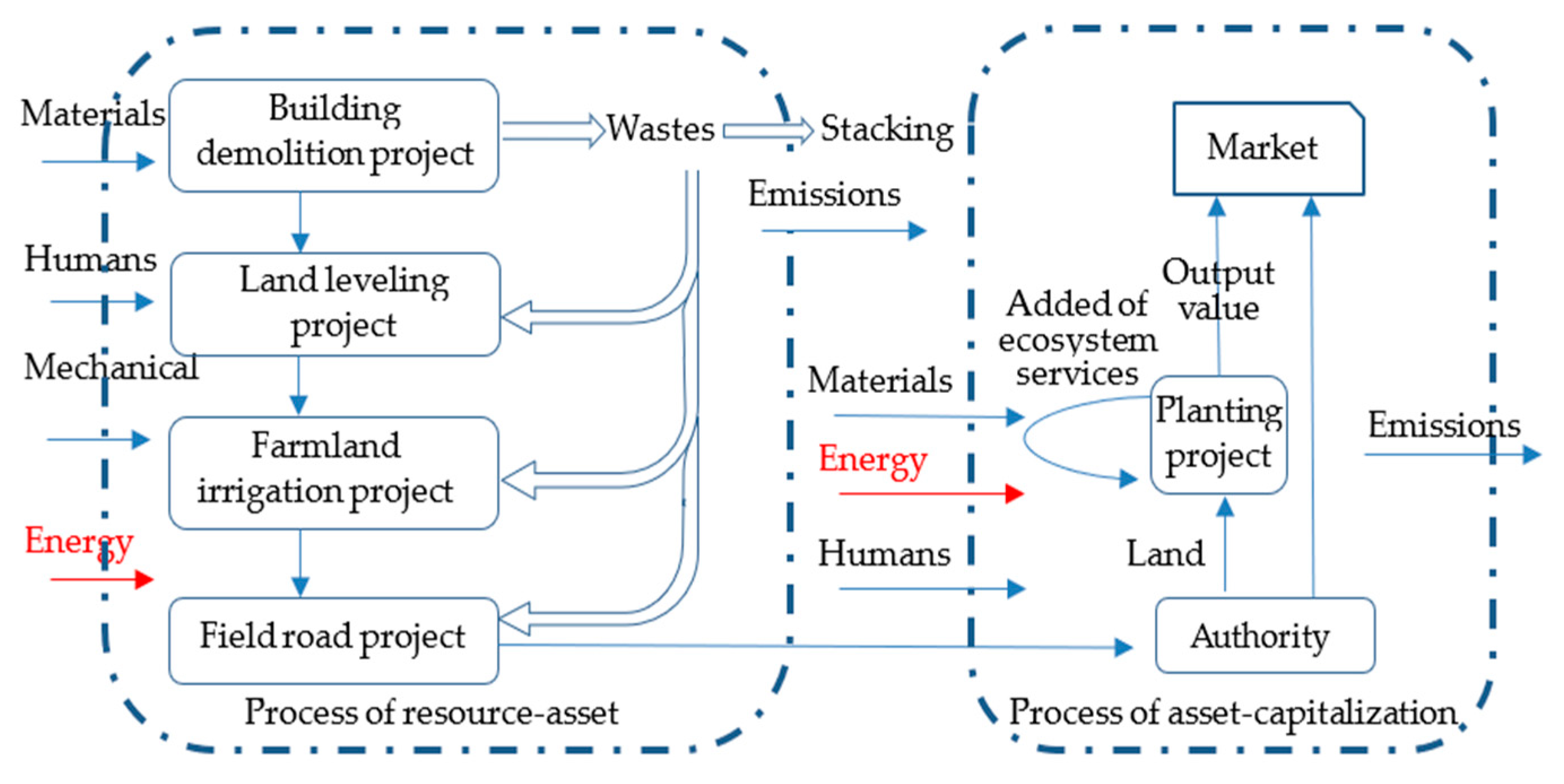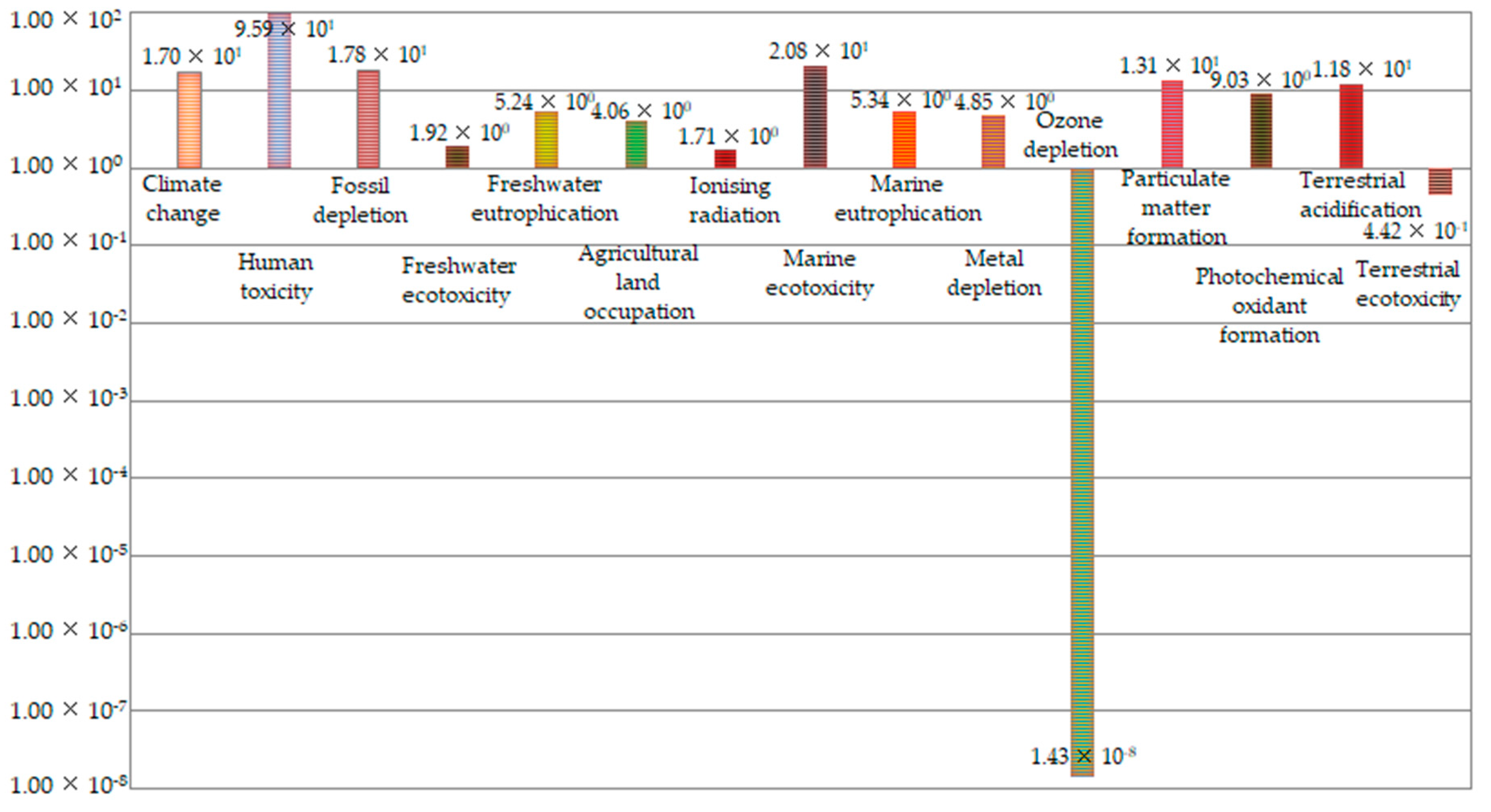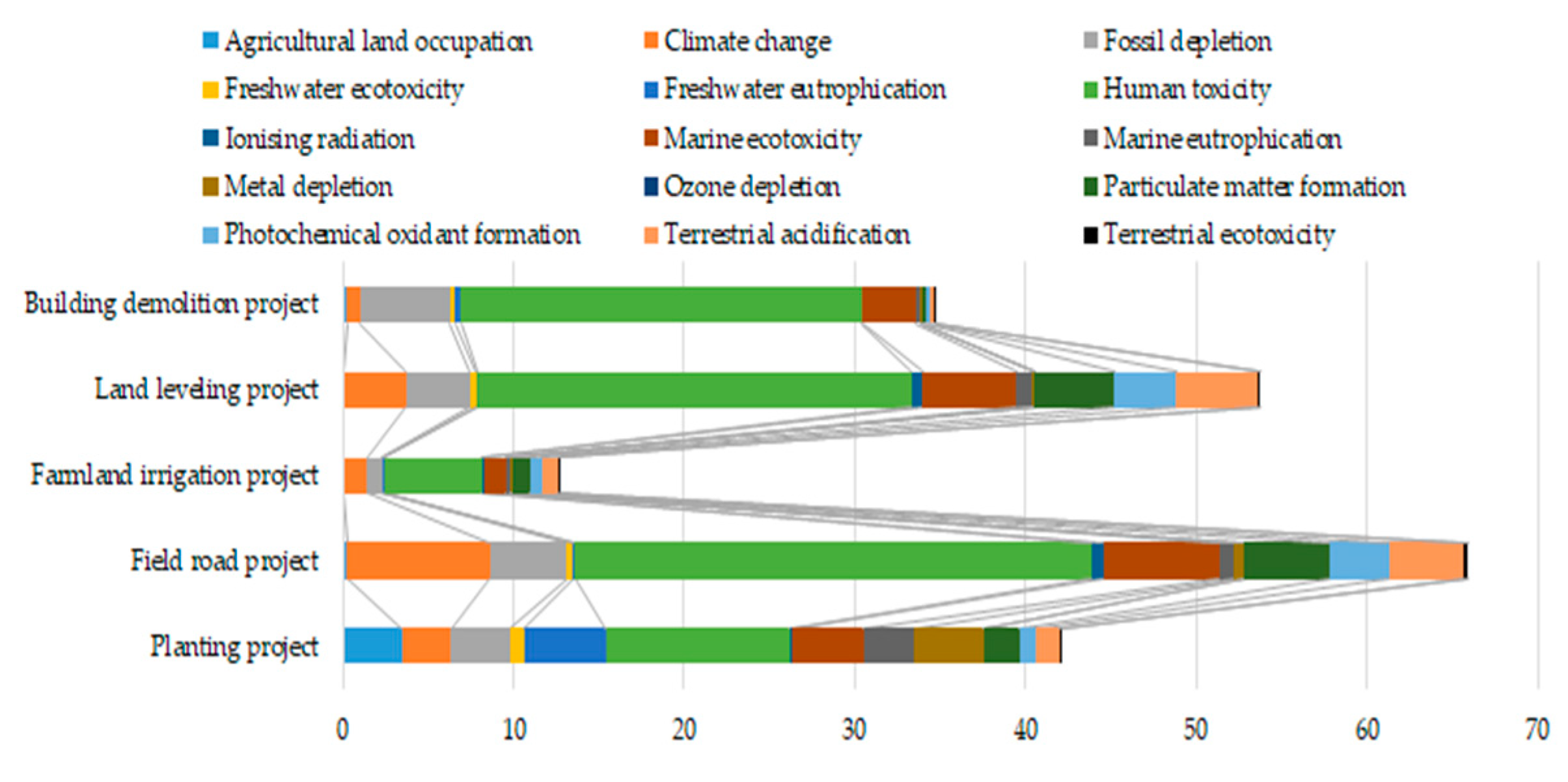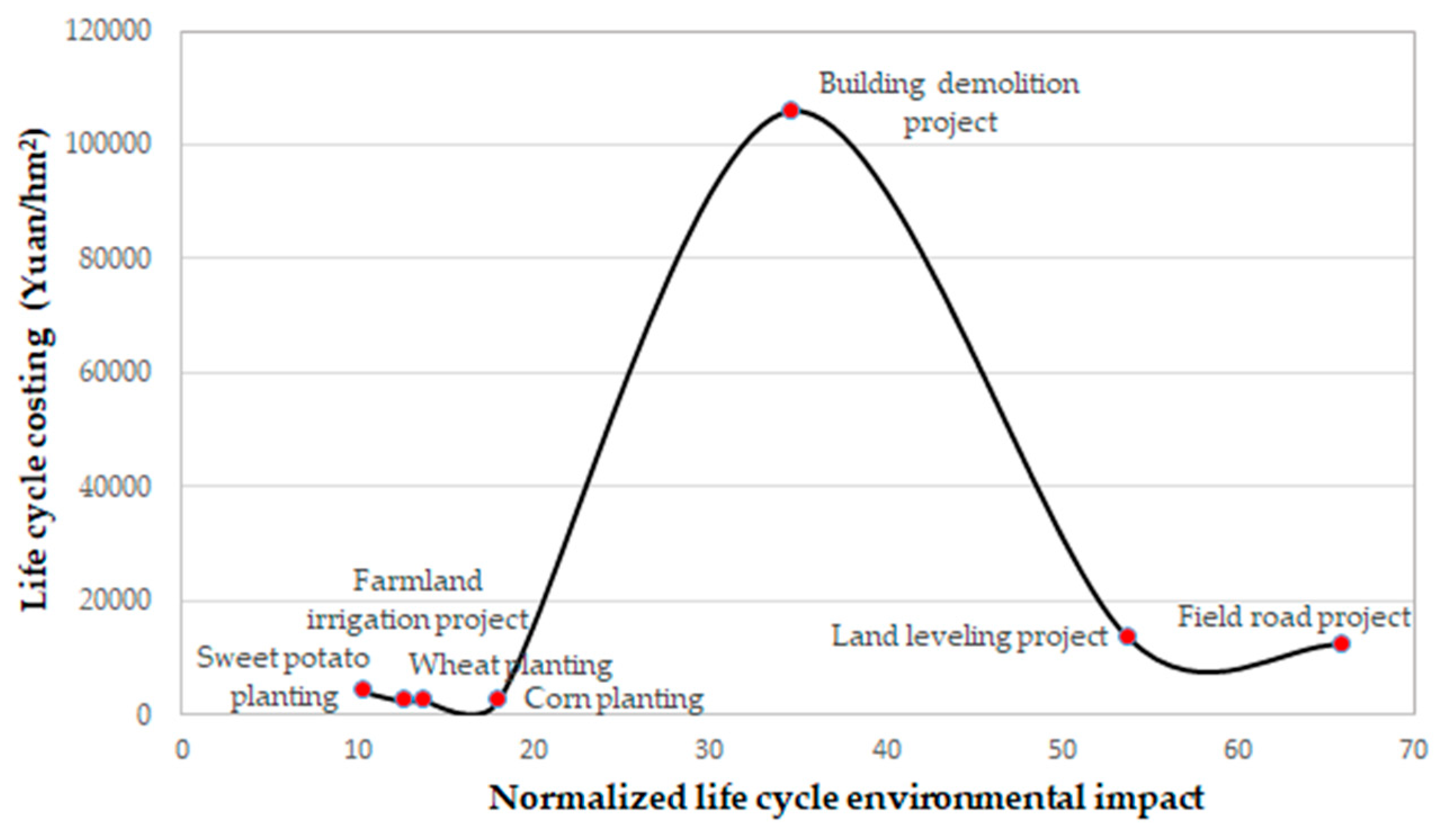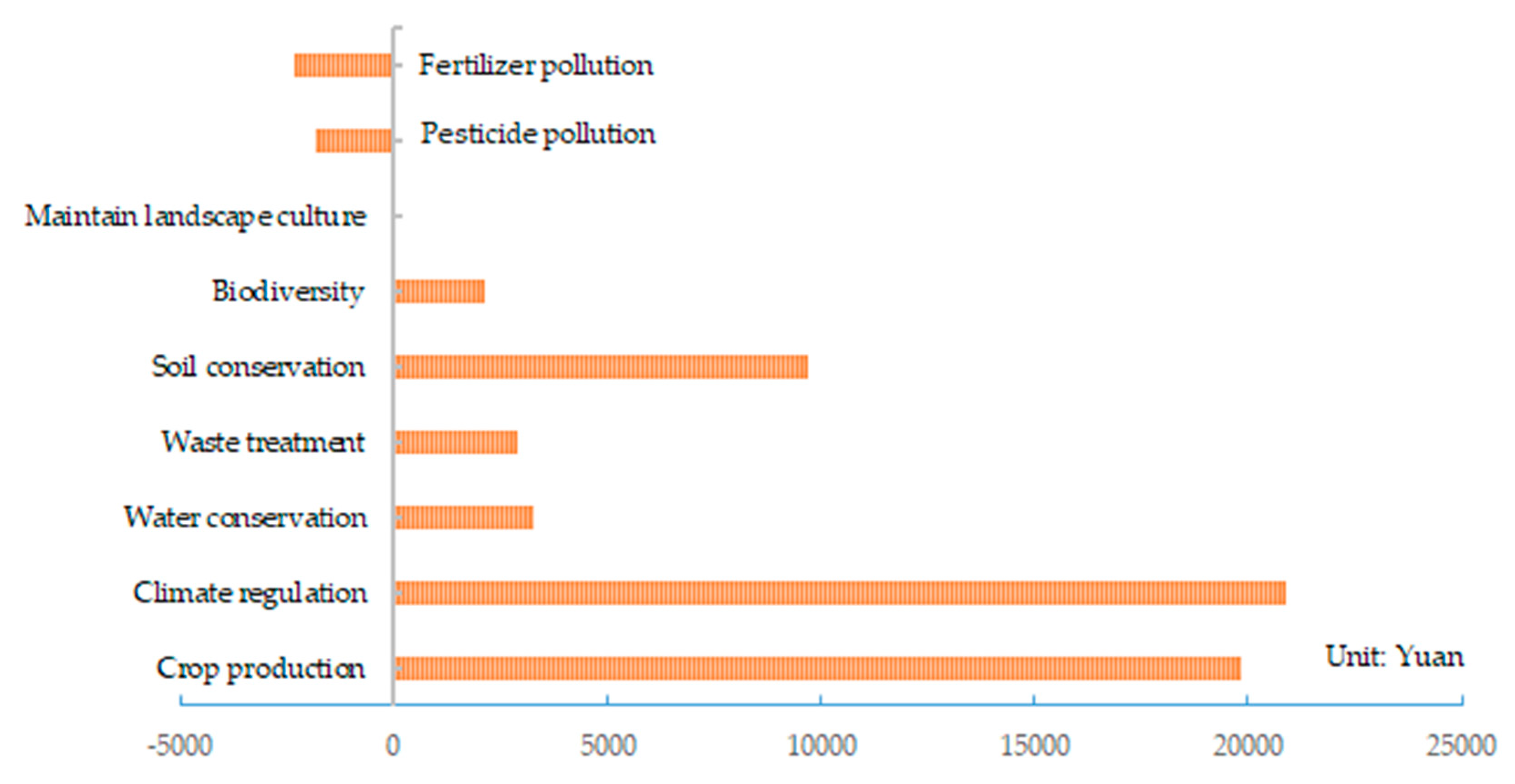1. Introduction
At present, the outlook for China’s natural resources is not optimistic. The total amount of natural resources is abundant, but the per capita occupancy is very low [
1]. Rapid economic growth also precipitates a period of a substantial increase in resource consumption. Due to the influence of national macro-control, resource prices cannot reflect real situations of resource scarcity, leading to a serious phenomenon of an unreasonable utilization of resources [
2,
3], which is particularly reflected in land resources. The contradiction between humans and the land has long been a difficult problem for sustainable development [
4,
5]. This contradiction is mainly reflected in the extreme mismatch between the rapidly growing population and limited land resources, and the resulting destruction of resources and the environment [
6]. Although China has a vast territory, its per capita available land resources are very limited due to the uneven development of its economy, the uneven distribution of its resources, and its large population base. At the same time, with the adjustment of China’s macroeconomic policies and the changes in personal development intentions, increasingly more rural people have begun to leave the countryside for better development opportunities in cities [
7,
8,
9,
10]. However, due to limited land resources, a large amount of cultivated, high-quality land will inevitably be occupied to meet the needs of the increasing urban population in the process of China’s urbanization. If a series of compensation measures are not taken, the ultimate result of this development model is likely to endanger China’s red line of 120 million hectares of arable land and aggravate the contradiction between humans and the land. Taking China’s land resources as an example, it is necessary to explore the future of China’s land resources under the background of economic development.
In order to develop and utilize land resources rationally, the Chinese government began to attach importance to the capitalization construction of natural resources. The “resource-asset-capital” trinity of land resource management idea, put forward by the Ministry of Natural Resources of the People’s Republic of China, is the most prominent of these measures. The Ministry of Natural Resources noted that natural resources should be managed gradually according to the “trinity” relationship of resources to assets and assets to capital, to revitalize existing limited natural resources and to help utilize idle natural resources to the greatest extent. The operation and transformation form of resource-asset-capitalization is shown in
Figure 1. Accelerating the study of the land resource-asset-capitalization process is conducive to exploring the future development direction of land resources under the premise of social, economic, and environmentally sustainable development, and realizing the purpose of “protecting resources, manifesting assets, and activating capital” [
11].
There are few studies on the capitalization proposition of land resources. The existing studies mainly focus on the theoretical framework and operational form of capitalization among land resources. In terms of the theoretical framework, Gao et al. [
12] analyzed the status of social subjects, ecological objects, market platforms, technical powers, and institutional guarantees in the capitalized operation system. Liu and Fan [
13] mainly discussed the maintenance and added value of state-owned land assets in the first capitalization stage, and pointed out that only by mastering the basic rules of capital operation can the capitalization of state-owned land assets be promoted for sustainable development. Li [
14] emphasized the importance of establishing a sustainable ecological value mechanism for theoretically realizing ecological capitalization and emphasized the positive role of public participation in the capitalization process. In terms of the operation form of the capitalization of land resources, because “land tickets” are the first form of capitalization of land resources in China, there is not much global research on this aspect. However, the capitalization of land resources can also be understood as a type of farmland system reform and an effective response to urban expansion and farmland protection. Therefore, international studies in this area have been more focused on urban expansion and farmland protection. Urban expansion involves the development stage, influencing factors, and formation mechanism of land expansion, as well as the problems of the layout of urban and rural construction with expansion, which covers economic, social, ecological, and other aspects [
15,
16,
17,
18,
19]. In terms of farmland protection, scholars have conducted many beneficial studies, mainly pertaining to the causes of farmland protection [
20], objectives [
21], methods [
22,
23], effects [
24,
25], the public’s willingness to support farmland protections [
26,
27], and saving soil for sustainability [
28], which would help promote the innovation of farmland conservation methods. In terms of land tickets, the research mainly focuses on the operational links and operational effects of land tickets [
29,
30,
31], and the price mechanisms of land tickets [
32].
Through a literature review, we found that the research on land resource-asset-capitalization and land tickets has been mainly concentrated on the theory of carding and actual operational forms, without the necessary focus on the process of land resource-asset-capitalization. Few scholars have combined those two aspects organically, and few scholars can quantifiably analyze the environmental–economic effect in the whole process of land resource-asset-capitalization. Based on this consideration, this paper uses land tickets in Yanba village, Jiangjin district, Chongqing (which is a typical land resource-asset-capitalization mode) as an example. On the basis, this paper integrates life cycle environmental–economic assessment and the value evaluation of ecosystem services to explore the economic and environmental effects in the whole process of land resource-asset-capitalization for land tickets, as well as the value changes in ecosystem services. Moreover, the key links and elements with the most significant environmental effects in the process of land resource-asset-capitalization were explored through a sensitivity analysis to analyze the sustainability of the process.
2. Materials and Methods
2.1. Chongqing Land Tickets
In 2007, the Chinese government approved Chongqing as a pilot area for comprehensive urban-rural supporting reform. On this basis, in order to solve the problems of the growth of both urban and rural construction land, and to establish an institutional channel for realizing land and property rights for farmers, the Chongqing government initiated land tickets. The operations of land tickets are divided into three steps. The first step is reclamation. Secondly, land tickets are publicly traded by the Chongqing country land exchange. Finally, the main body who purchased the land tickets chooses the land to be developed that conforms to the overall planning of urban and rural area use and applies for transfer procedures with the land tickets. By the end of April 2018, Chongqing had traded land tickets with a total value of 49.41 billion Yuan, covering an area of 16,806.67 hectares [
33]. In the realization of economic benefits in the process of capitalization, the following benefits are also realized: (1) Strengthening the protection of arable land. By the end of April 2018, Chongqing had used 11,560 hectares of land tickets and occupied 7246.67 hectares of cultivated land [
33], with greater subsidies and less occupation of farmland. (2) Boosting poverty alleviation and income. A total of 10,986.67 hectares of land tickets and 32.49 billion Yuan were traded in poor areas [
33]. (3) Promoting regional coordination. Seventy percent of the traded land tickets originated from the northeast and southeast of Chongqing, which are relatively backward in their economic development. Over 95% of the used land tickets pertained to the main city and western Chongqing, realizing long-distance and large-scale economic feedback. (4) Promoting coordinated interactions between urban and rural areas in terms of "people, land, and finance". By April 2018, with land tickets as the link, cities fed back more than 49 billion Yuan to rural areas. The lands between urban and rural areas offer more than 16,666.67 hectares, and 136,300 urban residents who settled in cities have benefited from land tickets of more than 11 billion Yuan [
33].
According to the resource-asset-capitalization process, the production process of land tickets, especially reclamation, is included in the resource-asset process in this paper, because this is the process that produces assets. We also focus on the process of realizing the rights of land assets. We classify the outcome of the production of land tickets, which causes changes in ecosystem services and results in economic benefits through the process of asset-capitalization, because in this process, the value of land is increased.
2.2. General Situation of the Study Area
The study area is located at 29°9′32′′ N, 106°9′0′′ E. This is a hilly area, with the elevation of the reclaimed sections between 220 m and 370 m, small topographic changes within the block, and a relative elevation difference between 2 m and 20 m. The homestead and yard are all almost horizontal, and the slopes of the other ancillary areas are within 10°. The distribution of each area is relatively concentrated, with an average distance of about 500 m, and the surrounding areas are mainly dry land. The soil in the study area is mainly grey and purple soil. The soil quality is fertile, and the cultivated layer is well preserved. The total nitrogen is 0.078%, total phosphorus is 0.104%, total potassium is 2.680%, and soil pH is 6.2. The surface water in the study area is mainly surface runoff, which is formed by natural rainfall. The average rainfall is 1294.3 mm. In recent years, agricultural production has been mainly based on traditional production, supplemented by simple mechanical work. In the study area, ordinary crops are mainly planted, including corn, sweet potato, and wheat.
2.3. Life Cycle Assessment
As an effective method to evaluate product environmental factors and their potential impacts throughout the entire lifecycle of the product (the so-called cradle to grave), life cycle assessments (LCAs) have been widely applied to quantify the environmental load caused by products and production processes since LCA was first proposed [
34]. At present, LCA is widely used in production process research, specifically involving the planting industry, the food industry, waste disposal, and other aspects. The application of LCA in many fields has shown a systematic, diversified, and refined development trend [
35,
36,
37]. The LCA evaluation method mainly includes the following four steps: Goal and scope definition, life cycle inventory (LCI) analysis, impact assessment, and result interpretation [
38,
39]. Among these steps, the goal and scope definition form the basis of an LCA evaluation, which mainly includes three aspects: The evaluation objective, functional unit, and system boundary [
40].
2.3.1. Evaluation Objective
In this paper, the LCA is mainly used to quantify the process of land resource-asset-capitalization from the perspective of the environment and environment–economy. Through a sensitivity analysis, this paper intends to determine the key factors for the process of capitalization, thereby providing a basis for quantifying the environmental impact and economic cost of the process of resource-asset-capitalization.
2.3.2. Functional Unit
According to the situation of the study area, 1 hectare of land tickets was selected as the functional unit. The selection of a functional unit is helpful for the data collation and result analysis.
2.3.3. System Boundary
In this paper, the resource-asset process of the land reclamation process is divided into four parts: A building demolition project, land leveling project, farmland irrigation project, and field road project. The outcome of the production of land tickets, which resulted in the changes in ecosystem services (value added), and the eventual economic benefits, are classified as the process of asset-capitalization.
Figure 2 illustrates the system boundary of this paper.
In
Figure 2, the left half presents the life cycle assessment of the resource-asset process, which involves materials, humans, mechanical equipment, and energy input from the building demolition to the planting project over the whole procedure. Eighty-percent of the main waste generated by the demolition of the building is reused, and the remainder is piled up on the site. The right half of
Figure 2 mainly describes the value-added accounting of ecosystem services in the land asset-capitalization process, as well as the economic value accounting of transaction property rights and the planting project.
2.3.4. Data Sources
All the original data were obtained through field research of Chongqing Sanhe land improvement Co., Ltd. in May 2018. By recording the input and output data of the whole life cycle, the real situation of land resource-asset-capitalization process is presented as comprehensively as possible. Because of the heavy machinery in the building demolition project, land leveling project, farmland irrigation project, and field road project involved in the determination of the mode of transportation and transportation distance, our research group, through communication with enterprise technical personnel, determined the different mode of transportation for large equipment to be large trucks. The mean distance from the Jiangjin district to the reclamation area is 38.3 km, and the mean distance from Longhua to the reclamation area is 14.3 km. The data inventory of each sub-module for 1 hectare of land tickets produced is shown in
Table 1,
Table 2 and
Table 3.
2.3.5. Impact Categories and Impact Assessment Methodology
At present, a variety of LCA evaluation methods (such as tools for the reduction and assessment of chemical and other environmental impacts (TRACI) [
41], the environmental design of industrial products (EDIP) [
42], and Recipe [
43]) have been widely used to evaluate the environmental impact of different products and different processes of production. This paper used Recipe to evaluate the environmental impact of the process of land resource-asset-capitalization. Recipe can evaluate the burden of production process on the environment comprehensively and objectively [
44]. Based on the research of this paper, 15 indicators were selected for analysis and research. These indicators are Climate change, Human toxicity, Fossil depletion, Freshwater ecotoxicity, Freshwater eutrophication, Ionizing radiation, Marine ecotoxicity, Marine eutrophication, Metal depletion, Ozone depletion, Particulate matter formation, Photochemical oxidant formation, Terrestrial acidification, Agricultural land occupation, and Terrestrial ecotoxicity.
2.3.6. Life Cycle Cost
Through the application of life cycle assessment (LCA) and life cycle cost (LCC) evaluation methods, the environmental impact assessment and economic evaluation of the whole life cycle of land resource-asset-capitalization can be realized [
45]. Through field research, the costs of direct materials, energy, direct labor, and mechanical equipment over the whole life cycle process are all considered.
Table 1,
Table 2 and
Table 3 also show the cost of each part of the life cycle process corresponding to the functional units.
2.4. Value Assessment of Ecosystem Services
According to the communique of the agriculture ministers conference of Organization for Economic Co-operation and Development (OECD) in 1998, in addition to providing the basic functions of food and fiber, agricultural land can also shape the natural landscape and provide respectable environmental benefits [
46]. Therefore, it is very meaningful to evaluate the changes in farmland ecosystem services caused by the process of land resource-asset-capitalization. The Millennium Ecosystem Assessment divides ecosystem services into four categories: Provisioning services, regulating services, supporting services, and cultural services, which have been widely recognized and supported [
47,
48]. Therefore, based on the references of the farmland ecosystem services research status quo and the characteristics of the land resource-asset-capitalization process, we divided agricultural land ecosystem services into five categories that consist of provisioning services, regulating services, supporting services, cultural services, and negative services—a total of nine kinds of services. The detailed descriptions and calculation methods for these agricultural land ecosystem services are shown in
Table 4.
5. Conclusions
As an effective land policy to balance urban and rural development, the policy of land tickets has been widely studied since it was proposed. This paper analyzed the process of resource-asset-capitalization by using land tickets in Yanba, Jiangjin, Chongqing as an example. The conclusions are as follows.
Considering the process of land resource-asset-capitalization from the environmental perspective, the six indicators with the most significant impact on the environment over the whole process are Human toxicity, Marine ecotoxicity, Fossil depletion, Climate change, Particulate matter formation, and Terrestrial acidification. If one only considers specific links in the whole life cycle process of land resource-asset-capitalization, the field road project has the most significant impact on the environment.
Analyzing the processes of land resource-asset and asset-capitalization shows that there is no significant positive correlation between the environmental impact and economic costs of different raw materials. From the perspective of the net economic output caused by the unit environmental load, the environmental and economic benefits of different crops can be compared comprehensively. In addition, the positive effect of the changes in ecosystem services during the process of land asset-capitalization is dominant and far outweighs the negative impact.
For different environmental protection purposes, it is possible to reduce the potential environmental impact in the whole process of land resource-asset-capitalization according to the sensitivity analysis of different inputs to various environmental indicators.
The price of land tickets does not reflect the actual value of land tickets. In this regard, the government needs to rationally regulate the development of the real estate market. At the same time, they should moderately relax their interventions and restrictions on the price of land tickets to make the value of land tickets more relevant to the market.
